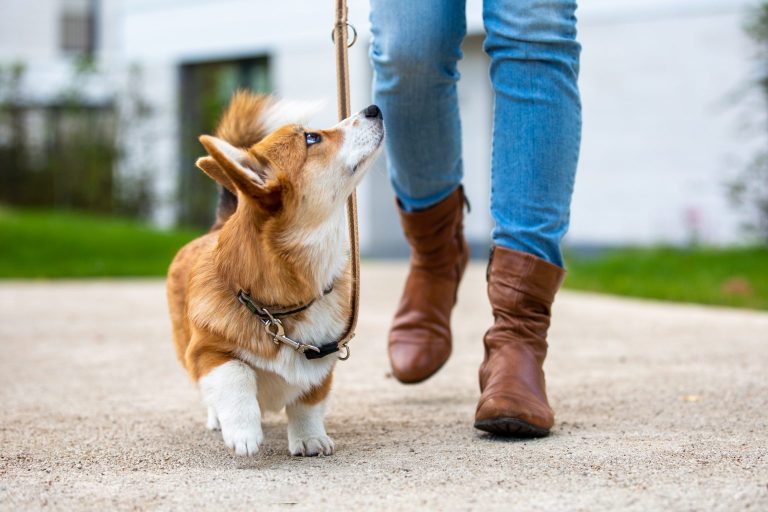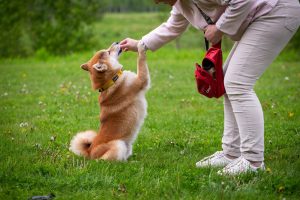We all want to take our dogs for a walk and be stress-free. While we can agree that taking your dog for a walk on a beautiful day is lovely, it can become a challenge. That is if your dog is constantly tugging on the leash, pulling, scampering off to explore, and simply making the walk a stressful task. How to teach dogs to heel? How to make sure your dog is focused on you and makes the walk enjoyable?
Well, that is what we are here to learn about today. Let’s go.
What is Heeling?
The simplest answer is heeling is when a dog walks in a controlled stride directly next to its handler without wandering around/away or pulling.
In other words, your dog matches your pace and movements exactly. Nowadays, however, we sometimes use “heel” for “loose leash walking”. It is a less strict skill where the dog should neither lag nor pull on the leash while walking.
Why It Is An Important Skill To Learn?
Heeling is one of the most important skills your pet has to learn. Why? Because it is beneficial for both of you. On your side, you have more control over your pup’s actions. Your dog will not drag you forward or lag behind during your walk.
For your pooch, heeling promotes a safe dog walking experience. Dogs that know how to heel are less likely to chase animals, run into the road, or consume toxic materials.
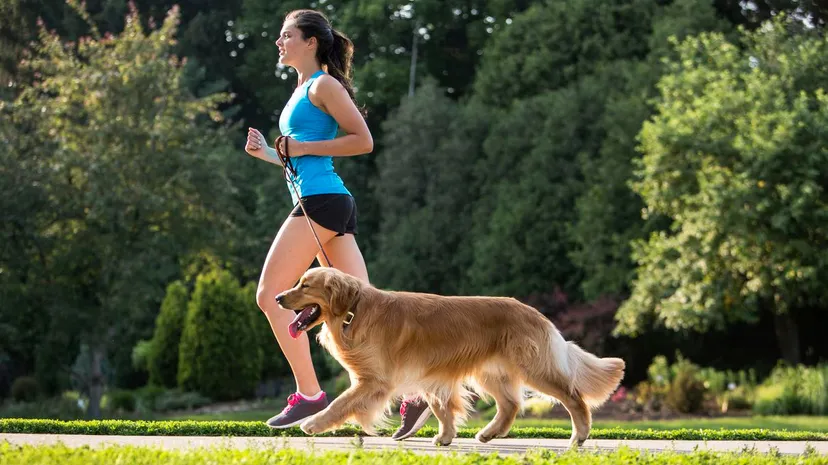
The Simplest Guide to Heeling
I want to give you the simplest way how to teach dogs to heel. No matter if you have a puppy, new dog, adult dog, purebred, mixed breed, or anything in between, this should help.
Before you begin any dog training process, make sure to get plenty of yummy dog treats. Cut them into small pieces, and then you are ready to go. Here is the guide.
1. Start inside the home, make a few circles with your dog on a leash to get his attention. Then walk around in a spacious room or up and down a hallway. Reward your dog for following you
2. It is time to kick up a notch. Call your dog’s name and point to the side you want him to walk on. It can be either side, but it is better to have your pet on the left side
3. As soon as your dog comes alongside you, use a clicker to mark, or use a verbal word like “yes”. Then, reward your dog with dog treats for good behavior. Repeat a couple of times, and then stop calling your pooch. Just point to the side and allow your dog to willingly come beside you
4. Some trainers prefer your dog to be in a sit position, others in a stand position. It doesn’t matter. Mark and reward for each time your dog comes into position
5. Now, it is time to increase the pace of your walking around the home. Increase the pace, and try some zig-zag movements. Most importantly, the goal is to try and lose your dog so he can find his position again
6. As your dog is getting better at heel training session, it is time to add eye contact. You can say “look” or “watch me”
7. Now, take things outside, first in your hard, then outdoors. You can do puppy training with a loose leash first, and then without a leash
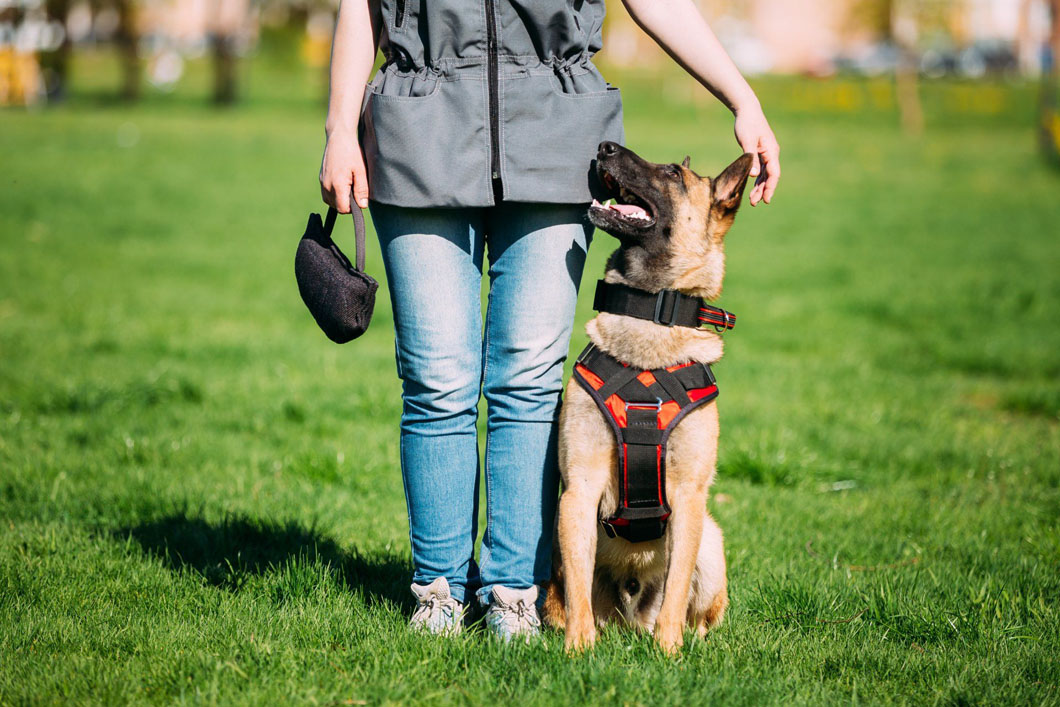
Using Hand Target for Heel Training
Another option for heel training is to use a hand target. I can safely say that hand target is a very useful tool, especially when teaching your dog to walk on a leash. It works wonderfully with dogs that are curious and want to go after things. And with medium-sized and large-sized dogs like Husky, Golden Retriever, Labrador Retriever, and German Shepherd, they are right at your hand.
To teach your dog hand target, you need to sit or stand in front of him. Stick your arm towards, offer the hand, holding it sideways, with the palm open and fingers at eye/nose height. Make sure you are not pushing the hand into the face of the dog.
Leave your hand in front of your dog. Wait for it to move forward and touch it. If the puppy sniffs or boops the hand, mark and reward. Make sure to reward the second your dog touches the hand target.
Now, let’s see how you can use that skill during the dog heel training process. Same as before, begin at home and gradually move outside.
1. Begin with rewarding your dog for paying attention to you while walking close. Reinforce moments like offering attention without saying or doing anything. This will teach your dog that giving attention results in treats and praise
2. Reward several times when your dog looks at you and remains in a standing position. Stand in front of your dog but do not ask for anything. Wait for your dog to offer you its attention, and reward. Slowly, your dog might come and stand to your side(that is the hope). Reward that good behavior
3. With your dog standing to your side, take one or two steps, and then offer your hand to target. Make sure your dog can easily see the hand target and reach it. Mark and reward, and then repeat the training process
4. If your dog gets ahead of you, try walking a step or two backward and reward the second your dog begins to follow you
5. Gradually, increase the steps between hand targets. Take five, six, seven, or ten steps before you offer a hand target. Do not focus on the exact number of steps. Your dog might be able to do only five or six, and then sniff at a nearby bush. Stop and wait for your dog’s attention
6. Slowly begin to fade away the hand target. Mark and reward your dog for being in a heel position
When to Increase Difficulty?
There are two ways you can step up the difficulty of the training. Those are adding distance, and adding distraction. But exactly when to go up a notch?
My general rule of thumb is to increase the difficulty after five successful tries of a previous threshold. So, let’s say, for example, your dog can move five steps without losing a step. Repeat five times successfully, and then add a step or two.
Distractions are a bit more challenging. You need rock-solid heel training for a longer distance before you can add distractions. Start with small distractions, like another person in the family calling your dog. Slowly move from there before you can get to loose leash walking in the park, and then off-leash walking.
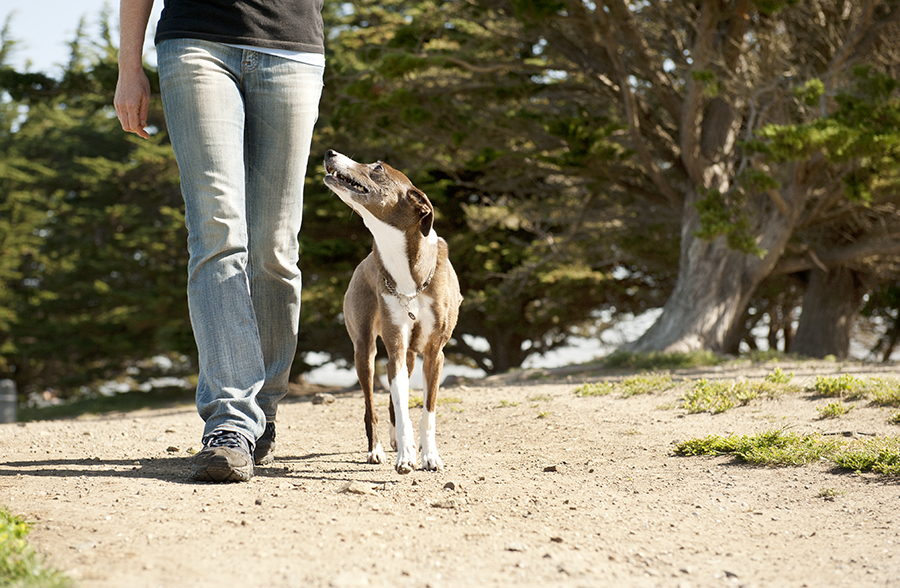
How to Proof Behavior?
Patience is a virtue. Do not expect your dog to be perfect. It is common for dogs to break out of a heel position when something happens around them. Early on, your pooch will test your patience and consistency. The more you give up, the harder it will be to get back on track.
The best way to proof a dog behavior is to take a step back or two at any stage during the training. You cannot move to the next step before the dog is ready. So, if your pet has forgotten the previous lessons, and makes mistakes in a row, go back to giving it more treats for walking a shorter distance.
Bonus Tips for Success
I want to finish off with some bonus tips. I want you to be successful as a dog owner in your training. So, here we go:
- – Heel is best performed on the left side for obedience
- – Hold the treat hand at your chest to prevent luring, which is the dog following the food. Make the treat hand out of reach
- – Treat with the hand next to your dog to prevent crossing in front of you
- – Always mark when your dog shows good behavior

